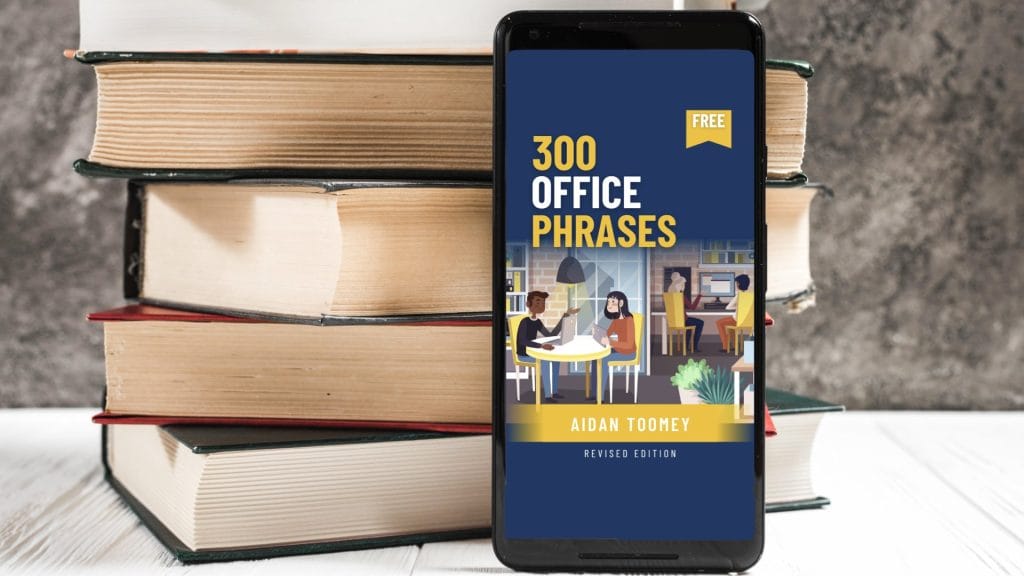
Unlock the Power of Phrasal Verbs in Business English
Phrasal verbs are an essential part of professional communication, especially in English-speaking workplaces. They add a natural, conversational tone to your speech and writing, making you sound more fluent and confident. However, for many non-native speakers, phrasal verbs can be challenging to learn because their meanings are often not literal.
In this lesson, we’ll explore 15 essential business English phrasal verbs that you can use in everyday office conversations. These verbs are practical, versatile, and commonly used in professional settings. By mastering them, you’ll improve your ability to communicate effectively in meetings, emails, and casual office chats.
Why Are Phrasal Verbs Important in Business English?
Phrasal verbs are everywhere in business communication. Whether you’re discussing a project, negotiating with a client, or brainstorming with your team, you’ll encounter them frequently. Here’s why they’re so important:
- They make your English sound natural: Native speakers use phrasal verbs all the time, so learning them helps you blend in.
- They’re versatile: A single phrasal verb can have multiple meanings depending on the context, making it a powerful tool for communication.
- They’re essential for understanding: If you don’t know common phrasal verbs, you might struggle to follow conversations or instructions in the workplace.
By learning these 15 phrasal verbs, you’ll take a big step towards mastering business English and boosting your confidence in professional settings.
How to Learn Business English Phrasal Verbs Effectively
Learning phrasal verbs doesn’t have to be overwhelming. Here are some tips to make the process easier and more enjoyable:
- Learn them in context: Instead of memorising lists, study phrasal verbs in real-life examples, like the office conversation below.
- Practise regularly: Use the phrasal verbs you learn in your daily conversations, emails, or even social media posts.
- Focus on the most common ones: Start with phrasal verbs that are frequently used in business settings, like the ones in this lesson.
- Watch and listen: Videos, podcasts, and TV shows are great resources for hearing phrasal verbs in action.
Watch, Learn, and Practise with Us!
To help you master these phrasal verbs, we’ve created a video lesson below: “15 Business English Phrasal Verbs for Speaking!”
In the video, you’ll see these phrasal verbs explained with examples and tips for using them in your own conversations.
Don’t forget to like, comment, and subscribe to our YouTube channel for more lessons. You can also follow us on LinkedIn and explore additional resources via our LinkTree.
15 Essential Business English Phrasal Verbs in Action
Let’s see how these phrasal verbs are used in a real office conversation. Pay attention to the context and how the verbs help convey meaning naturally and effectively.
Example Dialogue:
Joshua: “Hi Kayla, do you have a moment to catch up on our current project?”
Kayla: “Sure, Joshua. I just need to wrap up this email. Okay, I’m ready. What do you need to discuss?”
Joshua: “First, I wanted to follow up on the client feedback from last week. Have you had a chance to look into their concerns?”
Kayla: “Yes, I looked into it yesterday. Their main issue was with the delivery schedule. I’ll follow up with them today to confirm the new dates.”
Joshua: “Great. We also need to get back to the finance team with our budget estimates. Can you get back to them by the end of the day?”
Kayla: “Absolutely. I’ll review the numbers and get back to them this afternoon.”
Joshua: “Perfect. Before our meeting tomorrow, can you run through the presentation with me?”
Kayla: “Sure thing. Let’s run through it at 3:00 p.m. today.”
Joshua: “Sounds good. I also need to catch up on my emails. I’ve been swamped since the conference.”
Kayla: “I know the feeling. Maybe we can catch up over coffee later and discuss the new project?”
Joshua: “I’d like that. By the way, are you ready to take on the new marketing campaign?”
Kayla: “Yes, yes, I’m excited to take on this challenge. I’ll also bring up the idea of remote work during our team meeting.”
Joshua: “Good idea. And we should check in regularly about the progress. How about we check in every Monday morning?”
Kayla: “That works for me. Let’s make sure to break down the project into smaller tasks; it’ll make it easier to manage.”
Joshua: “Definitely. Can you break down the timeline for me later?”
Kayla: “Sure, I can do that. Also, we might need to push back the launch date of the new product by a week.”
Joshua: “Understood. We can push back our internal review as well. By the way, I’m planning to branch out into social media marketing. Our company needs to branch out into more diverse areas.”
Kayla: “That’s a great initiative. We should kick off a creative thinking session soon.”
Joshua: “Yes, let’s kick off the planning phase next week. It’s important to keep up with market trends.”
Kayla: “Agreed. We need to keep up our efforts to stay ahead of the competition. And during meetings, we should stick to the agenda to stay focused.”
Joshua: “Absolutely, it’s crucial to stick to our processes for efficiency. All right, let’s wrap up this conversation. Thanks for your time, Sarah.”
Kayla: “No problem, Joshua. I’ll get back to work now. Talk to you later.”
Quick Reference: The 15 Phrasal Verbs
Here’s a handy list of the phrasal verbs used in the dialogue, along with their meanings and examples:
- Catch up – Update oneself on something missed.
Example: “I need to catch up on my emails after the weekend.” - Wrap up – Finish or complete something.
Example: “Let’s wrap up this meeting by 3:00 p.m.” - Follow up – Check on or continue a previous action.
Example: “I’ll follow up with the client about their feedback.” - Look into – Investigate or examine something.
Example: “Can you look into the issue with the delivery?” - Get back – Respond or return to someone.
Example: “I’ll get back to you with the details tomorrow.” - Run through – Review or practise something.
Example: “Let’s run through the presentation before the meeting.” - Take on – Accept a responsibility or challenge.
Example: “I’m ready to take on the new project.” - Bring up – Mention or introduce a topic.
Example: “I’ll bring up the idea of remote work during the meeting.” - Check in – Communicate to ensure progress or status.
Example: “Let’s check in with the team every Monday.” - Break down – Divide into smaller parts for clarity.
Example: “Can you break down the budget into categories?” - Push back – Delay or postpone something.
Example: “We might need to push back the launch date.” - Branch out – Expand into new areas or activities.
Example: “Our company is planning to branch out into social media marketing.” - Kick off – Start or initiate something.
Example: “We’ll kick off the project with a brainstorming session.” - Keep up – Maintain pace or progress.
Example: “It’s important to keep up with industry trends.” - Stick to – Adhere to a plan or rule.
Example: “Let’s stick to the agenda to stay on track.”
How to Practise These Phrasal Verbs
Here are some practical ways to practise and remember these phrasal verbs:
- Role-play: Recreate the dialogue above with a colleague or friend, or create your own scenarios.
- Write sentences: Use each phrasal verb in a sentence related to your work or daily life.
- Flashcards: Create flashcards with the phrasal verb on one side and its meaning and example on the other.
- Set goals: Challenge yourself to use at least three new phrasal verbs in your conversations each day.
Engage with Us!
We’d love to hear from you!
- Which of these phrasal verbs do you already use at work?
- Are there any other phrasal verbs you’d like to learn?
Leave a comment below and let us know. Don’t forget to like and share this lesson with your colleagues or students!
For more examples of phrasal verbs in action, visit our lesson on 15 Business English Phrasal Verbs for Speaking
FREE! THE ULTIMATE 300 BUSINESS ENGLISH PHRASES FOR COMMUNICATION IN THE OFFICE

